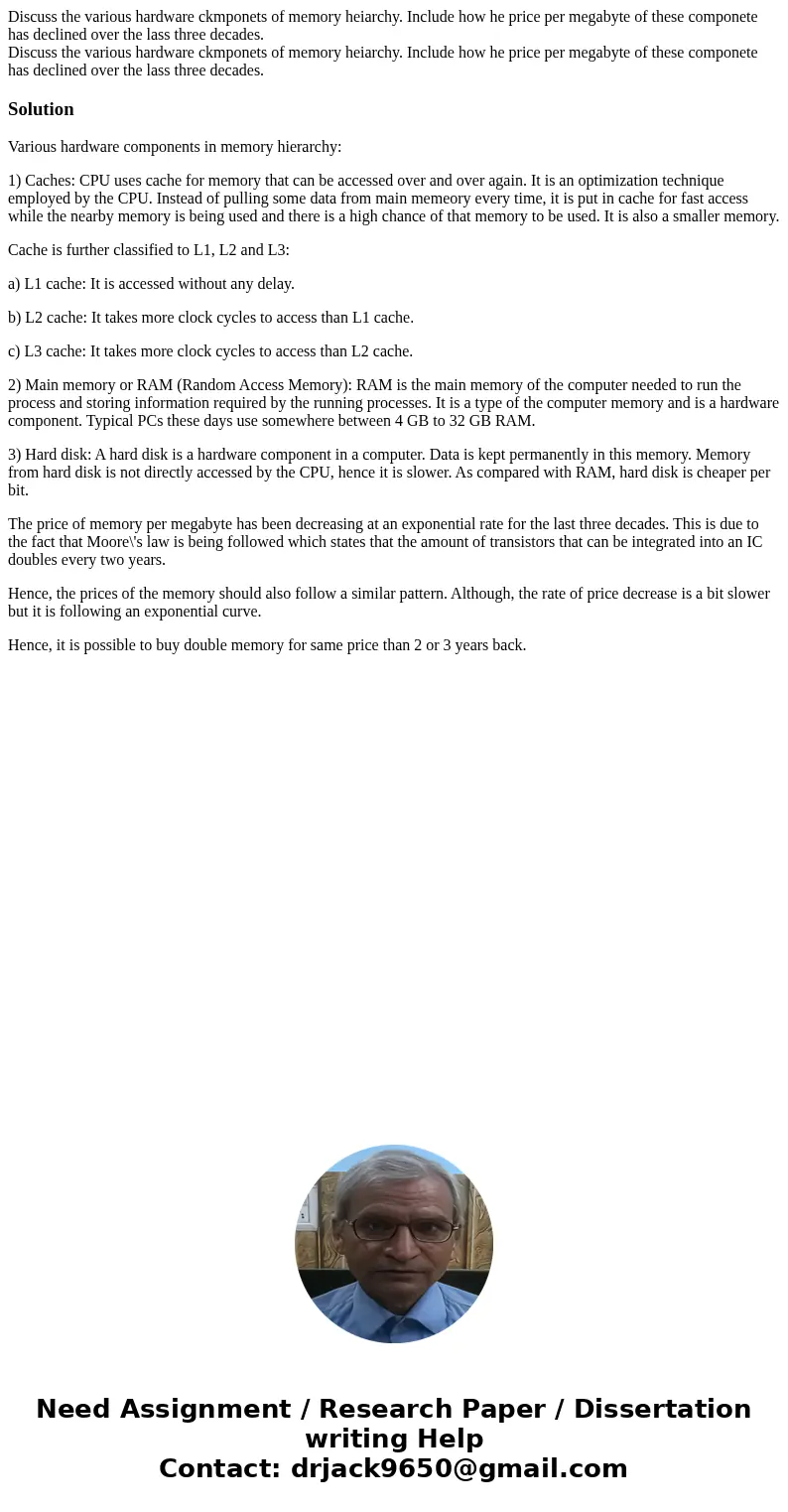Discuss the various hardware ckmponets of memory heiarchy In
Solution
Various hardware components in memory hierarchy:
1) Caches: CPU uses cache for memory that can be accessed over and over again. It is an optimization technique employed by the CPU. Instead of pulling some data from main memeory every time, it is put in cache for fast access while the nearby memory is being used and there is a high chance of that memory to be used. It is also a smaller memory.
Cache is further classified to L1, L2 and L3:
a) L1 cache: It is accessed without any delay.
b) L2 cache: It takes more clock cycles to access than L1 cache.
c) L3 cache: It takes more clock cycles to access than L2 cache.
2) Main memory or RAM (Random Access Memory): RAM is the main memory of the computer needed to run the process and storing information required by the running processes. It is a type of the computer memory and is a hardware component. Typical PCs these days use somewhere between 4 GB to 32 GB RAM.
3) Hard disk: A hard disk is a hardware component in a computer. Data is kept permanently in this memory. Memory from hard disk is not directly accessed by the CPU, hence it is slower. As compared with RAM, hard disk is cheaper per bit.
The price of memory per megabyte has been decreasing at an exponential rate for the last three decades. This is due to the fact that Moore\'s law is being followed which states that the amount of transistors that can be integrated into an IC doubles every two years.
Hence, the prices of the memory should also follow a similar pattern. Although, the rate of price decrease is a bit slower but it is following an exponential curve.
Hence, it is possible to buy double memory for same price than 2 or 3 years back.

 Homework Sourse
Homework Sourse